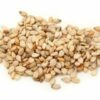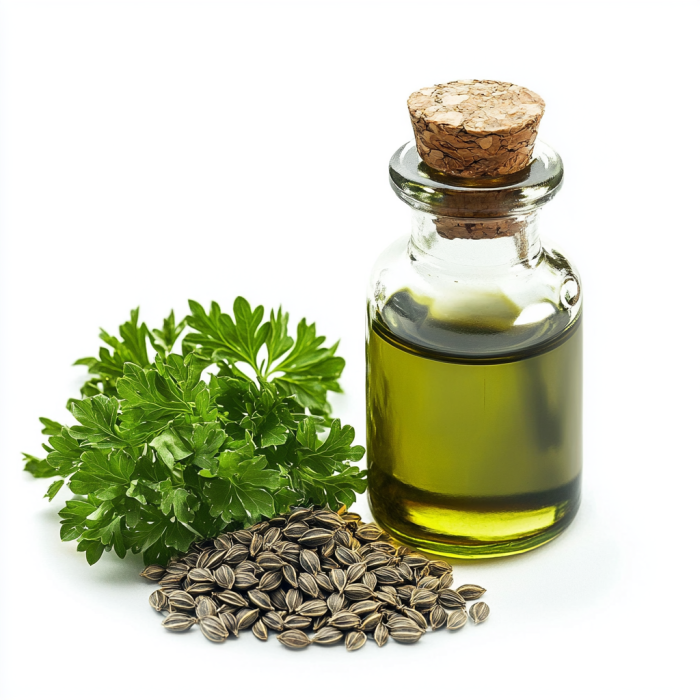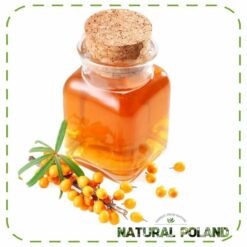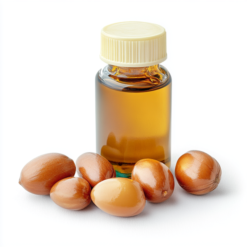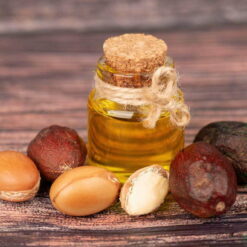Properties of parsley oil
Parsley seed oil contains many nutrients, including monounsaturated fatty acids, especially oleic acid (45.8%) and linoleic acid (44.6%), as well as valuable essential oils such as apiol, myristicin and limonene. In food use, the oil improves digestion and assimilation of food. It has a cholagogic effect and stimulates the secretion of digestive juices. In addition, it can relieve reflux, constipation and flatulence by promoting peristaltic movement of the intestines. The oil also has a diuretic effect, so it promotes cleansing of the urinary tract and increases blood flow through the kidneys. It protects against infections, reduces swelling, and supports the body’s detoxification processes. Parsley seed oil is not recommended for pregnant and breastfeeding women, as it can stimulate uterine contractions. It should also not be used in excessive amounts due to interactions with medications. In cosmetic use, parsley oil exhibits anti-inflammatory and antibacterial properties. It can be applied topically to affected areas to help heal wounds and scrapes and reduce inflammation. The oil can also be used in cosmetics for mature, vascular and oily skin to even out skin tone, moisturize and brighten the complexion. Thanks to its vitamin C content, the oil has a depigmenting effect, as well as reducing dark circles under the eyes and discoloration. In addition, thanks to its petroselic acid content, this oil promotes collagen and elastin production. When used in body cosmetics, parsley seed oil improves circulation and strengthens the walls of blood vessels, minimizing the appearance of “spider veins.” In addition, this product stimulates hair growth, reduces hair loss, strengthens hair roots and improves hair condition.



